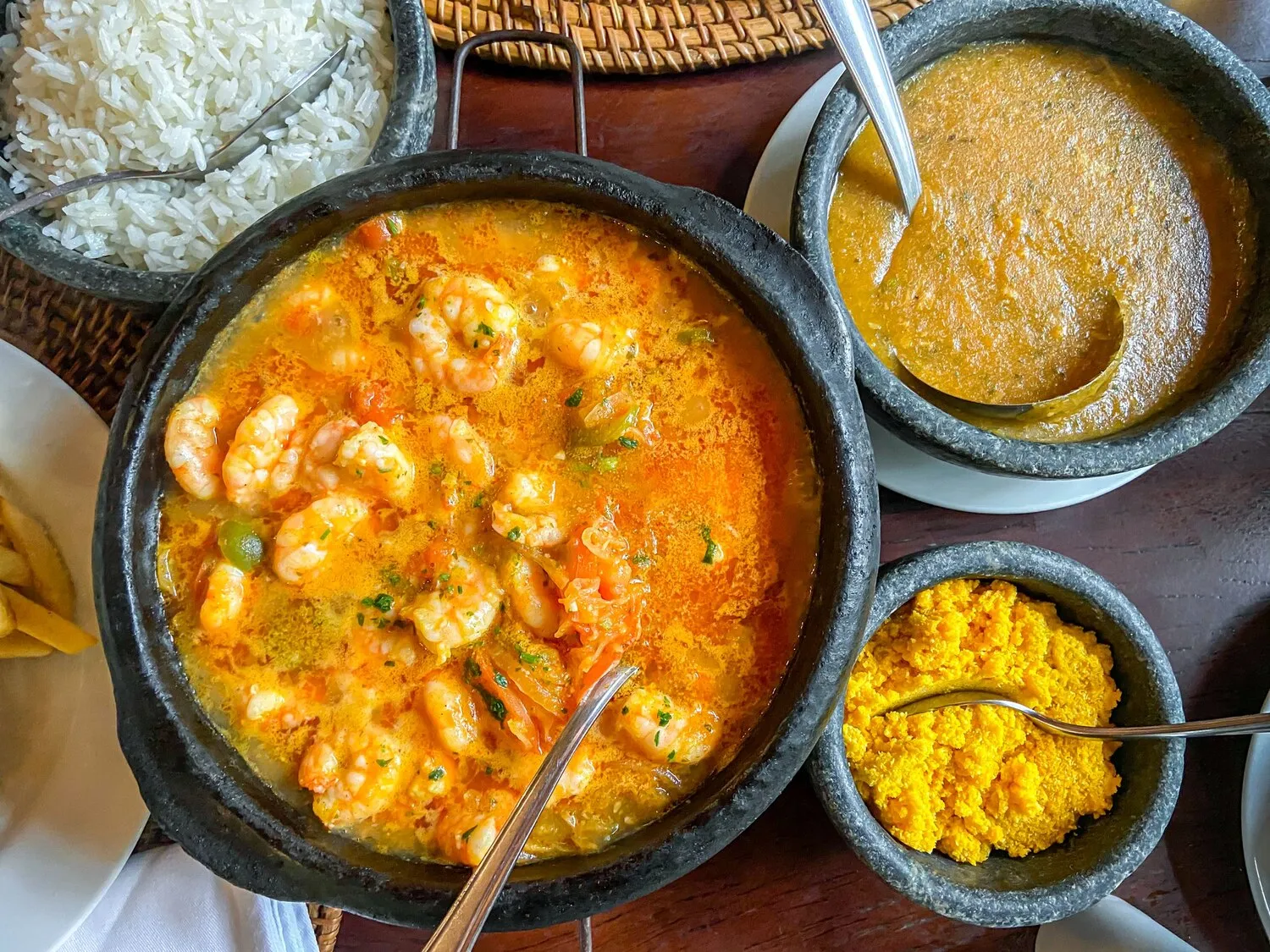
Fish Stew
Delicious fish stew with fresh ingredients.
Nutrition Facts
* The % Daily Value (DV) tells you how much a nutrient in a serving of food contributes to a daily diet. 2,000 calories a day is used for general nutrition advice.
Fish stews have a long history in coastal communities around the world, evolving as a way to use locally available fish and shellfish along with seasonal vegetables. Bouillabaisse, a famous fish stew from Marseille, France, serves as a key historical influencer on global variations of this dish. Ancient civilizations relied on the sea as a primary food source, making fish stews a natural and necessary part of their cuisine.
Fish stew is often associated with coastal cultures and fishing communities, where it represents a communal meal and a celebration of the sea's bounty. It's a dish often prepared for family gatherings or special occasions.
Regional Variations
Different regions have their own unique takes on fish stew. Bouillabaisse from France, Cioppino from San Francisco, and Moqueca from Brazil are just a few examples, each reflecting local ingredients and culinary traditions.
Sustainability
The dish often promotes sustainable fishing practices by utilizing seasonal and locally sourced seafood. It encourages responsible consumption and supports local fishing communities.
Celebration of Seafood
Fish stew highlights the diversity of seafood available and encourages experimentation with different types of fish and shellfish.
Fish stew offers a complex and layered flavor profile that balances the delicate taste of seafood with the richness of a well-seasoned broth. The fresh ingredients shine through, creating a harmonious and satisfying dish.
The primary flavor comes from the variety of fish used, which can range from mild white fish like cod or halibut to richer, oilier fish like salmon or mackerel. Shellfish, such as mussels, clams, and shrimp, contribute a briny sweetness. The broth is typically flavored with aromatic vegetables like onions, garlic, and tomatoes, as well as herbs like thyme, bay leaf, and parsley. Spices such as saffron (in some versions) and paprika add depth and warmth. A touch of acidity, often from lemon juice or white wine, brightens the overall flavor.
Freshness is Key
Use the freshest fish and shellfish possible for the best flavor and texture. Look for firm flesh, clear eyes, and a fresh, clean scent.
Don't Overcook the Fish
Add the fish towards the end of the cooking process to prevent it from becoming dry and rubbery. Cook just until the fish is opaque and flakes easily with a fork.
Build the Broth
Take the time to develop a flavorful broth by sautéing the vegetables and using a good quality fish stock or fumet. This will form the foundation of the stew's flavor.
Seasoning is Essential
Taste and adjust the seasoning throughout the cooking process. Don't be afraid to experiment with different herbs and spices to create your own unique flavor profile.
Layer the Fish
Add fish and seafood in order of cooking time, fish that takes longer to cook should be added first. Start from firm fish and end with delicate fish and seafood.
Explore additional Stew dishes and restaurants
Explore StewDiscover top dining spots and culinary experiences in Gent.
Explore GentLearn more about the food culture, restaurant scene, and culinary heritage of Belgium.
Explore Belgium